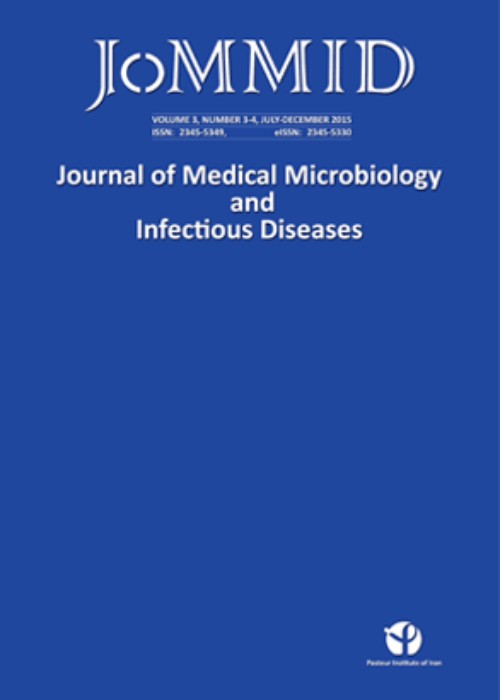A Study on the Prevalence of Enterobius vermicularis in Kindergartens of Dezful City (Khuzestan Province, Iran), 2013
Author(s):
Abstract:
Introduction
Intestinal parasitic infections are of a major public health problem in many societies. Enterobius vermicularis (E. vermicularis) is particularly more persistent in places such as kindergartens, dormitories, and barracks, where people live and work together. This study aimed to investigate the prevalence and risk factors of infection with E. vermicularis in the kindergartens of Dezful City, 2013. Methods
In this cross-sectional study, a total number of 254 children aged 3-7 years, were randomly selected from private kindergartens from different parts of the city based on population density. Data collection tool was a questionnaire including demographic characteristics. The children were examined using Graham method (Scotch tape) to determine the prevalence rate of E. vermicularis infection. Non-parametric statistical χ2 test was used to evaluate the objectives. All statistical tests were done at a confidence level of 95% and a p-value<0.05. Results
A total of 254 children were examined for the prevalence of E. vermicularis, of whom 127 cases (50%) were males and 127 (50%) were female. Out of the total number of examined children, 20 cases (7.8%) were observed to be infected with E. vermicularis. Of these patients, 11 (4.3%) were female and 9 (3.5%) were male. The highest rate of infection was observed in children aged 5-6 years. The highest prevalence of E. vermicularis infection (19 cases, 7.5%) was observed in children of parents with preliminary education. However, one positive case (0.3%) was documented for a family with parents having higher education level. In general, this study showed 19 out of 20 E. vermicularis positive cases were from Dezful''s kindergartens located in poor socio-economic areas. Another factor for the prevalence of E. vermicularis was presence of health trainers in the kindergartens. A considerable number of E. vermicularis cases (95%) were recorded for kindergartens with no health trainer. Conclusion
With respect to the obtained p-value of 0.6 for age and gender of children, as well as having equal gender distribution and according to the findings of this study, the age and gender did not have significant effects on the prevalence of E. vermicularis infection in kindergartens. In addition, the infection rate was recorded to be 5.8% for the age group of 5-6 years. In fact, the prevalence of E. vermicularis infection was increased with increasing age, probably due to increased social communication in this age.Keywords:
Language:
English
Published:
Journal of Medical Microbiology and Infectious Diseases, Volume:2 Issue: 2, Spring 2014
Pages:
76 to 79
magiran.com/p1438413
دانلود و مطالعه متن این مقاله با یکی از روشهای زیر امکان پذیر است:
اشتراک شخصی
با عضویت و پرداخت آنلاین حق اشتراک یکساله به مبلغ 1,390,000ريال میتوانید 70 عنوان مطلب دانلود کنید!
اشتراک سازمانی
به کتابخانه دانشگاه یا محل کار خود پیشنهاد کنید تا اشتراک سازمانی این پایگاه را برای دسترسی نامحدود همه کاربران به متن مطالب تهیه نمایند!
توجه!
- حق عضویت دریافتی صرف حمایت از نشریات عضو و نگهداری، تکمیل و توسعه مگیران میشود.
- پرداخت حق اشتراک و دانلود مقالات اجازه بازنشر آن در سایر رسانههای چاپی و دیجیتال را به کاربر نمیدهد.
In order to view content subscription is required
Personal subscription
Subscribe magiran.com for 70 € euros via PayPal and download 70 articles during a year.
Organization subscription
Please contact us to subscribe your university or library for unlimited access!


